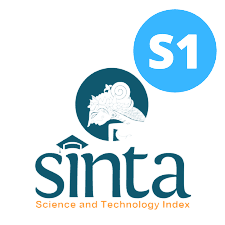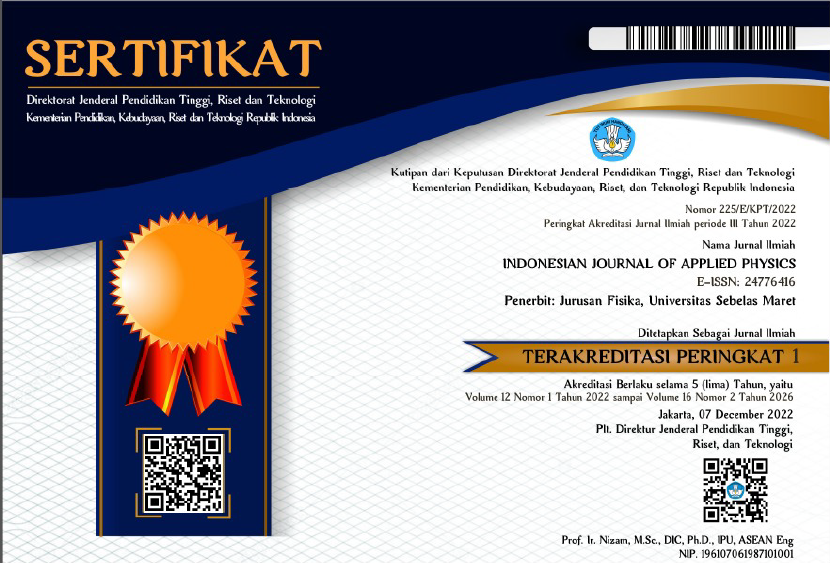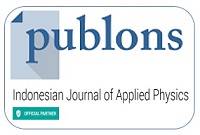Thermo-Fluid Dynamics of PLA Deposition in Fused Filament Fabrication 3D Printing: A Numerical Study
Abstract
Prototyping plays an important role in product design and has recently gained benefit from the rising popularity of 3D printing. It is to be expected that 3D printing will accommodate more materials, which need to be tailored to specific design requirements. Insights into heat transfer and fluid flows (thermo-fluid dynamics) in the printing process is thus essential to obtain favorable process parameters that can lead to high quality prints. In this work, polylactic acid (PLA) melt in Fused Filament Fabrication (FFF) 3D printing was numerically studied through Computational Fluid Dynamics (CFD) simulations, with a focus on the thermo-fluid dynamics of the strand deposition of the filament melt on the printer platform. The study was carried out by evaluating 6 printing cases, with a variation of 2 key process parameters, i.e., printing speed (30 and 45 mm/s) and platform temperature (310, 320, and 340 K). The simulation results showed that the free surface in the tip region of the strand has the most tendency to adhere to the printing platform heated at 340 K with the printing speed of 45 mm/s, as compared with other cases. This was affected by the lower dynamic viscosity in the region, relative to other cases, resulting from the high platform temperature and shear rate generated by the high printing speed.
Keywords
Full Text:
PDFReferences
1 Najmon, J. C., Raeisi, S. & Tovar, A. 2019. Review of Additive Manufacturing Technologies and Applications in the Aerospace Industry. Additive Manufacturing for the Aerospace Industry. Elsevier.
2 Blakey-Milner, B., Gradl, P., Snedden, G., Brooks, M., Pitot, J., Lopez, E., Leary, M., Berto, F. & Du Plessis, A. 2021. Metal Additive Manufacturing in Aerospace: A Review. Mater Des, 209, 110008.
3 Zhang, F., Wei, M., Viswanathan, V.V., Swart, B., Shao, Y., Wu, G. & Zhou, C. 2017. 3D Printing Technologies for Electrochemical Energy Storage. Nano Energy, 40, 418–431.
4 Zhu, C., Liu, T., Qian, F., Chen, W., Chandrasekaran, S., Yao, B., Song, Y., Duoss, E.B., Kuntz, J.D., Spadaccini, C.M. & Worsley, M.A. 2017. 3D Printed Functional Nanomaterials for Electrochemical Energy Storage. Nano Today, 15, 107–120.
5 Popov, V.V., Muller-Kamskii, G., Kovalevsky, A., Dzhenzhera, G., Strokin, E., Kolomiets, A. & Ramon, J. 2018. Design and 3D-printing of Titanium Bone Implants: Brief Review of Approach and Clinical Cases. Biomed Eng Lett, 8, 337–344.
6 Tan, G., Ioannou, N., Mathew, E., Tagalakis, A.D., Lamprou, D.A. & Yu-Wai-Man, C. 2022. 3D Printing in Ophthalmology: From Medical Implants to Personalised Medicine. Int J Pharm, 625, 122094.
7 Haryńska, A., Carayon, I., Kosmela, P., Szeliski, K., Łapiński, M., Pokrywczyńska, M., Kucińska-Lipka, J. & Janik, H. 2020. A Comprehensive Evaluation of Flexible FDM/FFF 3D Printing Filament as a Potential Material in Medical Application. Eur Polym J, 138, 109958.
8 Rayna, T. & Striukova, L. 2016. From Rapid Prototyping to Home Fabrication: How 3D Printing is Changing Business Model Innovation. Technol Forecast Soc Change, 102, 214–224.
9 Shi, H., Cao, J., Sun, Z., Ghazi, Z.A., Zhu, X., Han, S., Ren, D., Lu, G., Lan, H. & Li, F. 2023. 3D Printing Enables Customizable Batteries. Batteries Supercaps, 6, e202300161.
10 Gebler, M., Uiterkamp, A.S. & Visser, C. 2014. A Global Sustainability Perspective on 3D Printing Technologies. Energy Policy, 74, 158–167.
11 Chen, X., Chen, G., Wang, G., Zhu, P. & Gao, C. 2020. Recent Progress on 3D-printed Polylactic acid and its Applications in Bone Repair. Adv Eng Mater, 22, 1901065.
12 Murariu, M. & Dubois, P. 2016. PLA Composites: From Production to Properties. Adv Drug Deliv Rev, 107, 17–46.
13 Srinivas, V., van Hooy-Corstjens, C.S., Rastogi, S. & Harings, J.A. 2020. Promotion of Molecular Diffusion and/or Crystallization in Fused Deposition Modeled Poly (lactide) Welds. Polymer, 202, 122637
14 Chaunier, L., Guessasma, S., Belhabib, S., Della Valle, G., Lourdin, D. & Leroy, E. 2018. Material Extrusion of Plant Biopolymers: Opportunities & Challenges for 3D Printing. Addit Manuf, 21, 220–233.
15 Lepoivre, A., Boyard, N., Levy, A. & Sobotka, V. 2020. Heat Transfer and Adhesion Study for the FFF Additive Manufacturing Process. Procedia Manuf, 47, 948–955.
16 Comminal, R., Serdeczny, M.P., Pedersen, D.B. & Spangenberg, J. 2018. Numerical Modeling of the Strand Deposition Flow in Extrusion-based Additive Manufacturing. Addit Manuf, 20, 68–76.
17 Ufodike, C.O. & Nzebuka, G.C. 2022. Investigation of Thermal Evolution and Fluid Flow in the Hot-End of a Material Extrusion 3D Printer using Melting Model. Addit Manuf, 49, 102502.
18 Salentijn, G.I., Oomen, P.E., Grajewski, M. & Verpoorte, E. 2017. Fused Deposition Modeling 3D Printing for (Bio) Analytical Device Fabrication: Procedures, Materials, and Applications. Anal Chem, 89(13), 7053–7061.
19 Quintana, J.L.C., Hiemer, S., Duarte, N.G. & Osswald, T. 2021. Implementation of Shear Thinning Behavior in the Fused Filament Fabrication Melting Model: Analytical Solution and Experimental Validation. Addit Manuf, 37, 101687.
20 Mishra, A.A., Momin, A., Strano, M. & Rane, K. 2022. Implementation of Viscosity and Density Models for Improved Numerical Analysis of Melt Flow Dynamics in the Nozzle during Extrusion-based Additive Manufacturing. Prog Addit Manuf, 7, 1–14.
21 Kim, S.K. & Kazmer, D.O. 2022. Non-isothermal non-Newtonian Three-dimensional Flow Simulation of Fused Filament Fabrication. Addit Manuf, 55, 102833.
22 Tümer, E.H. & Erbil, H.Y. 2021. Extrusion-based 3D Printing Applications of PLA Composites: A Review. Coatings, 11, 390.
Refbacks
- There are currently no refbacks.
















